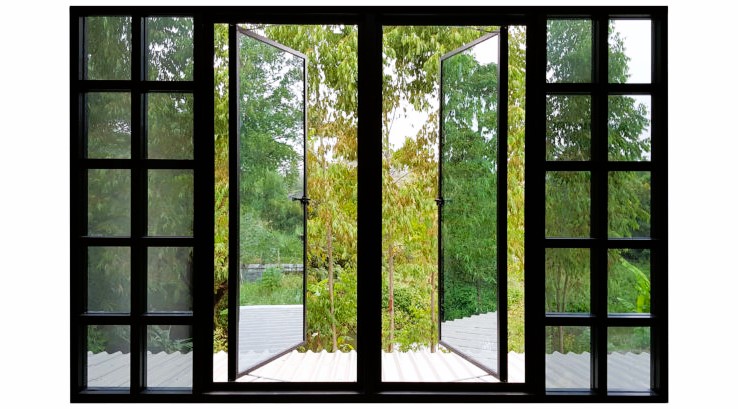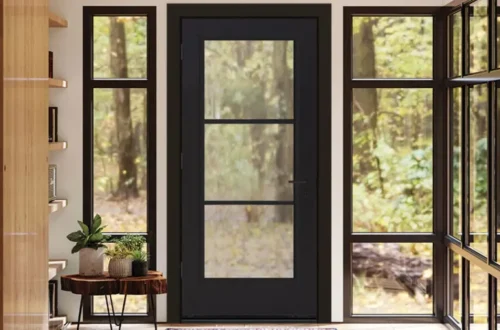Windows are not just functional elements of a building; they also play a significant role in its aesthetic appeal. Window grids, also known as muntins or grilles, are decorative dividers that create patterns on a window’s surface. These grids have evolved over time, reflecting changing architectural styles and design preferences. In this article, we will explore the transition of window grid styles and patterns from traditional to modern, showcasing how they have shaped the visual character of our homes and buildings.
Understanding Window Grids
Window grids are an integral part of window design, and they serve several purposes:
- Aesthetic Enhancement: Window grids add visual interest and character to a building’s exterior and interior.
- Historical Reference: They can be used to mimic historical architectural styles, connecting a building to a particular era or design movement.
- Functional Dividers: In some cases, grids are used to divide a large window into smaller panes for practical reasons.
Traditional Window Grid Styles

1. Colonial Grids: These grids are characterized by a symmetrical pattern, often with a central vertical and horizontal bar, creating a grid of six panes. They are a hallmark of colonial-style homes.
2. Prairie Grids: Inspired by the Prairie School architectural style, these grids feature horizontal and vertical bars that extend to the window’s edges, forming a rectangular pattern.
3. Victorian Grids: The Victorian era saw the use of intricate, ornate grids with curved or diagonal muntins. These grids are associated with the elaborate design of Victorian homes.
4. Craftsman Grids: Craftsman-style homes often have simple, straightforward grids with vertical and horizontal bars, creating a straightforward, functional pattern.
5. Georgian Grids: Georgian architecture features symmetrical grids with a central horizontal bar. These grids are common in Georgian-style homes.
Modern Window Grid Styles
1. Gridless or Clear-View Windows: Modern architecture often favors clean, unobstructed views. Gridless or clear-view windows feature large, uninterrupted panes of glass, allowing for expansive vistas and a sleek, minimalist look. Read our guide to improving the aesthetics of your home.
2. Contemporary Grids: Contemporary design incorporates grids that are more subtle, with thinner muntins that do not overpower the glass. These grids add a touch of visual interest while maintaining a modern aesthetic.
3. Industrial Grids: Inspired by industrial and loft-style architecture, industrial grids are bold and distinctive. They often use thicker, black muntins to create a strong design statement.
4. Custom Grids: Modern design allows for a high degree of customization. Homeowners can work with manufacturers to create unique grid patterns that suit their individual tastes and the style of their home.
Transitional Grid Styles
Some architectural styles bridge the gap between traditional and modern, leading to transitional grid styles that combine elements of both. These styles often blend classic window proportions with modern materials and finishes.
Choosing the Right Grid Style

Selecting the right grid style for your home involves considering factors such as the architectural style, personal design preferences, and the overall character of the building. Here are some tips to help you choose the right grid style:
- Architectural Compatibility: Ensure that the grid style you choose complements the architectural style of your home.
- Personal Taste: Grids are a chance to express your personal design preferences. Consider the visual impact you want to achieve.
- Energy Efficiency: Keep in mind that the number and size of grid patterns can affect the energy efficiency of your windows. More grids may lead to more heat loss.
- Historical Accuracy: If you are restoring or replicating a historical building, consider using grids that are true to the architectural era.
- Balance: Achieve a balanced look by ensuring that the grid style you choose is in harmony with the proportions of your windows and the overall structure.
Conclusion
Window grid styles and patterns have come a long way, reflecting the evolution of architectural design and personal preferences. From traditional and ornate to sleek and modern, the world of window grids offers a diverse range of options to enhance the visual character of your home or building.
For more information on building standards and regulations in Canada, you can refer to Canada.ca. These resources provide valuable insights into construction and safety standards that may impact your choice of window grid styles.




